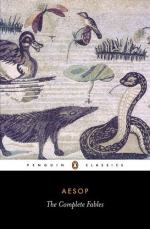|
This section contains 7,213 words (approx. 25 pages at 300 words per page) |

|
SOURCE: "A New Parliament of Birds: Aesop, Fiction, and Jacobite Rhetoric," in Eighteenth-Century Studies, Vol. 27, No. 2, Winter 1993-94, pp. 235-54.
In the following essay, Hanazaki examines the function of animals, and particuarly bird characters, in eighteenth-century British Aesopic fables employed for purposes of political satire.
I
The fable, one of the most popular traditional generes in English literature, assumes a newly distinctive character in the decades around the turn of the seventeenth century. This, when seen in perspective, has implications for post-Revolutionary political rhetoric and the subsequent history of imaginative literature. Its marked trajectory between 1630 and 1680 has been perceived and illustrated,1 but from a rather misleading angle. Certainly, the political history of the fable had been generally understood by the 1720s, but Samuel Croxall's "new" collection (1722), with which Annable Patterson begins her essay, testifies to a change: the genre became, ostensibly, depoliticized in the mid-century in the hands...
|
This section contains 7,213 words (approx. 25 pages at 300 words per page) |

|


